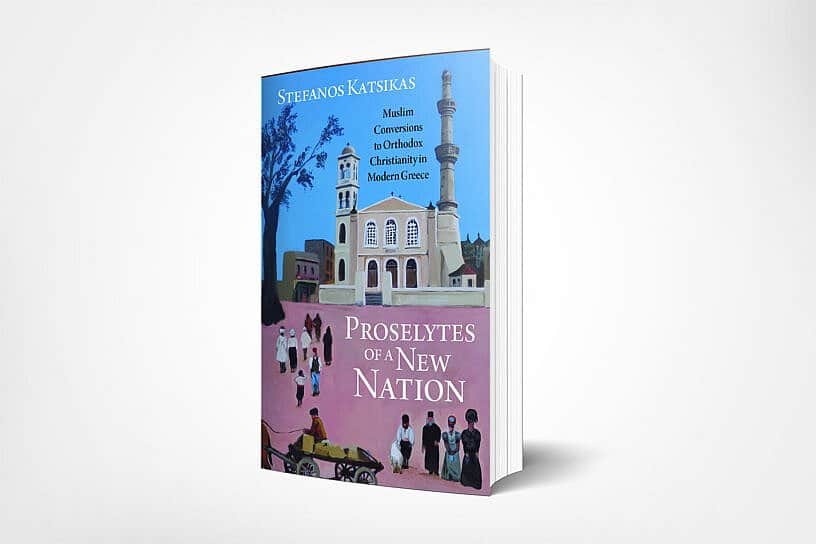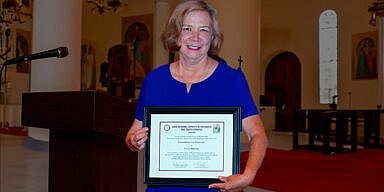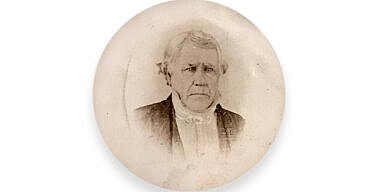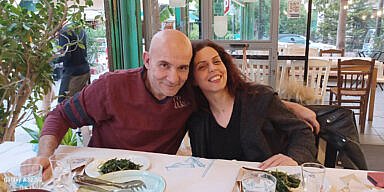Stories of nations often focus on birth, either in violent revolution or some sort of division or attrition and on key headline events and struggles, such as epic wars or trials of nationhood. Rarely are some of the administrative, educational, or bureaucratic activities of national youth and adolescence in the spotlight. It makes for less drama, yet often enough, therein is the real national story.
Greeks around the world celebrated the Bicentennial of the initial spark of revolution in 2021, commemorating a haphazard series of events that took eight years and foreign intervention to effect, but then somehow, the attention of the student of Greek history fast forwards to events later in the 1800s, and most usually to the Balkan War successes of 1912 and 1913. This is an oversight, and one that comes into focus reading Dr. Stefanos Katsikas’ work, Proselytes of a New Nation: Muslim Conversions to Orthodox Christianity in Modern Greece, published in 2022 by Oxford University Press.
While the main focus of his book concerns the Islamic populations left in Greece—those who did not fall in the massacres of the revolution or emigrate to the Ottoman Empire before or immediately after the war of independence—one cannot talk about this population without treating the whole concept of post-Revolution Greek identity as well.
In this, Dr. Katsikas is particularly effective, as he offers both a granular statistical and anecdotal story of the Muslims within the emerged Kingdom of Greece (basically Peloponnesus, the Arta-Volos line, and the Cycladic and Saronic Islands), and at the same time the clear fusion of the Ottoman era Rum Millet (Orthodox Ottoman) identity with Greek national identity. He goes further to indicate that the Greek identity readily absorbed other Orthodox with different ethnolinguistic backgrounds, most notably the Arvanites within the Greek Kingdom but also Vlachs and Slav-speaking Orthodox in other parts of would-be Greece.
The means by which the Muslim populations were absorbed differed from the Orthodox of different linguistic groups. Often enough, the Peloponnesian Muslims did not heavily differ in ethnolinguistic or cultural background from their Greek Christian neighbors. In other cases, the marriage of orphaned or displaced Muslims, particularly women, would bring these people into the Hellenic fold. While Katsikas cites cases of family members in the Ottoman Empire unsuccessfully trying to reclaim family members who stood steadfast to their new Christian identity, he does allow that this may not be the whole story. Coercion, personal, financial, and familiar, together with the problem of trying to reintegrate into the Muslim world after conversion, probably stayed in many hands.
It is also clear that conversion to Orthodoxy opened opportunities in the new nation and the opportunity to attempt to recover Muslim-owned lands confiscated during the Revolution. Those who could not bring themselves to convert often would allow their children to do so or quit the Greek Kingdom for the Ottoman Empire. While far less common than Muslim conversion, a fair number of Jews converted to Orthodoxy during this period for similar reasons of “fitting in” to a nation-state with a clear identification of Orthodox religion with the Greek nationality.
With the Orthodox populations speaking a different language, the Hellenization process was less official and more subtle. Katsikas rightly reminds us that linguistic identity was fluid and Balkan languages had a huge vocabulary of common words and grammar (known in German as the “Balkan Sprachbund”— Balkan Linguistic Union), together with common cultural and, most importantly, religious links of Orthodox Christianity, made these peoples’ Hellenization an easier though more uneven process.
The Greek state that emerged in the 1840s thus possessed a clear identity based on the Orthodox religious identity first and foremost, and secondarily, on the Greek linguistic and territorial identity. What was not Orthodox, and particularly what was Muslim, had to be extirpated from the body politic, as antithetical to the Greek identity and as a potential fifth column for an Ottoman resurgence. Katsikas clearly emphasizes that the model developed at that time in Greece became the subsequent blueprint followed by other Ottoman Balkan successor states such as Serbia and Bulgaria. Crucially, Katsikas, who readily uses Bulgarian and other Balkan sources in his book, shows us that Greece is very much part of the Balkans and its rebirth and youthful identity formation was part of the Balkan norm rather than the exception.
Katsikas’ work lays an important foundation in the English language scholarship of post-independence Greece by considering what happened to the “Ottoman” element in Greek society. The Greek national state and identity became largely congruent to the Orthodox millet. While Greek society in its two centuries of national existence has undergone sweeping changes and modernization, this postrevolutionary period set a clear foundation for how the state viewed itself and its citizens, with clear implications to this day.




